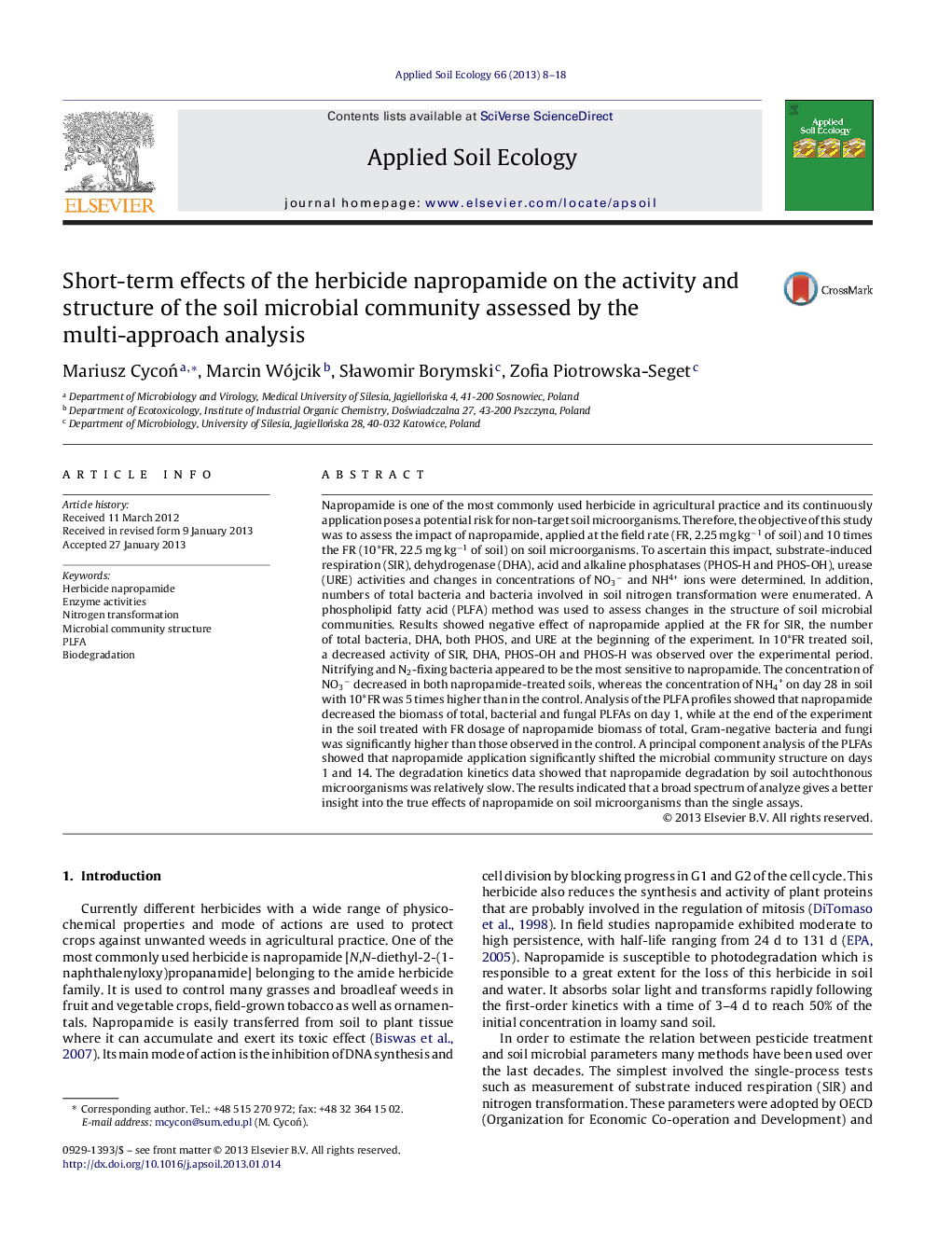| کد مقاله | کد نشریه | سال انتشار | مقاله انگلیسی | نسخه تمام متن |
|---|---|---|---|---|
| 4382411 | 1617817 | 2013 | 11 صفحه PDF | دانلود رایگان |

Napropamide is one of the most commonly used herbicide in agricultural practice and its continuously application poses a potential risk for non-target soil microorganisms. Therefore, the objective of this study was to assess the impact of napropamide, applied at the field rate (FR, 2.25 mg kg−1 of soil) and 10 times the FR (10*FR, 22.5 mg kg−1 of soil) on soil microorganisms. To ascertain this impact, substrate-induced respiration (SIR), dehydrogenase (DHA), acid and alkaline phosphatases (PHOS-H and PHOS-OH), urease (URE) activities and changes in concentrations of NO3− and NH4+ ions were determined. In addition, numbers of total bacteria and bacteria involved in soil nitrogen transformation were enumerated. A phospholipid fatty acid (PLFA) method was used to assess changes in the structure of soil microbial communities. Results showed negative effect of napropamide applied at the FR for SIR, the number of total bacteria, DHA, both PHOS, and URE at the beginning of the experiment. In 10*FR treated soil, a decreased activity of SIR, DHA, PHOS-OH and PHOS-H was observed over the experimental period. Nitrifying and N2-fixing bacteria appeared to be the most sensitive to napropamide. The concentration of NO3− decreased in both napropamide-treated soils, whereas the concentration of NH4+ on day 28 in soil with 10*FR was 5 times higher than in the control. Analysis of the PLFA profiles showed that napropamide decreased the biomass of total, bacterial and fungal PLFAs on day 1, while at the end of the experiment in the soil treated with FR dosage of napropamide biomass of total, Gram-negative bacteria and fungi was significantly higher than those observed in the control. A principal component analysis of the PLFAs showed that napropamide application significantly shifted the microbial community structure on days 1 and 14. The degradation kinetics data showed that napropamide degradation by soil autochthonous microorganisms was relatively slow. The results indicated that a broad spectrum of analyze gives a better insight into the true effects of napropamide on soil microorganisms than the single assays.
► Multi-approach analysis of soil bacteria after napropamide application was performed.
► Napropamide changed several biochemical and microbiological parameters of the soil.
► Number of nitrifying and N2-fixing bacteria strongly decreased after napropamide application.
► PLFA patterns revealed alterations in the microbial community structure of the soil.
► Degradation of napropamide was relatively slow and dependent on the dosage used.
Journal: Applied Soil Ecology - Volume 66, April 2013, Pages 8–18